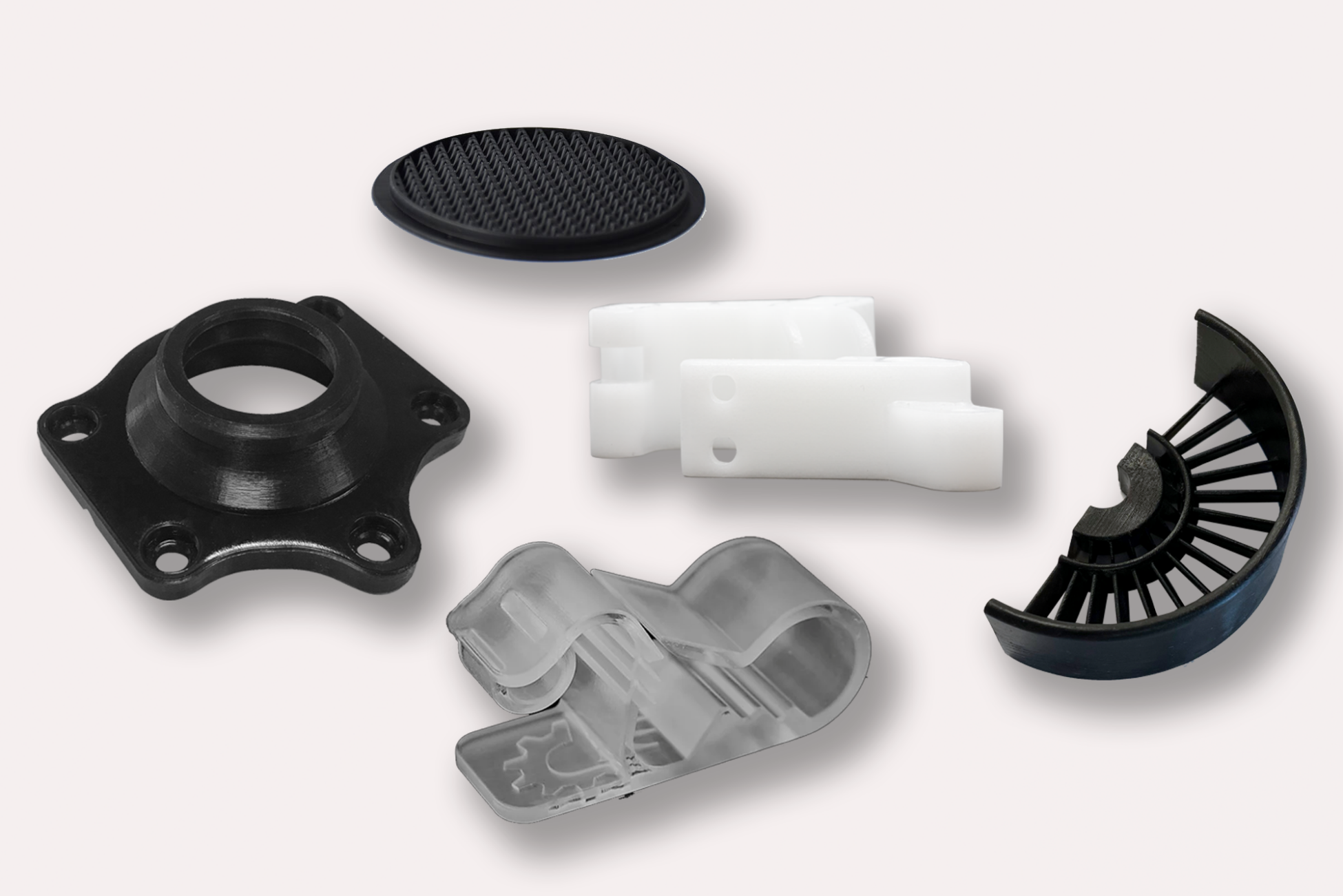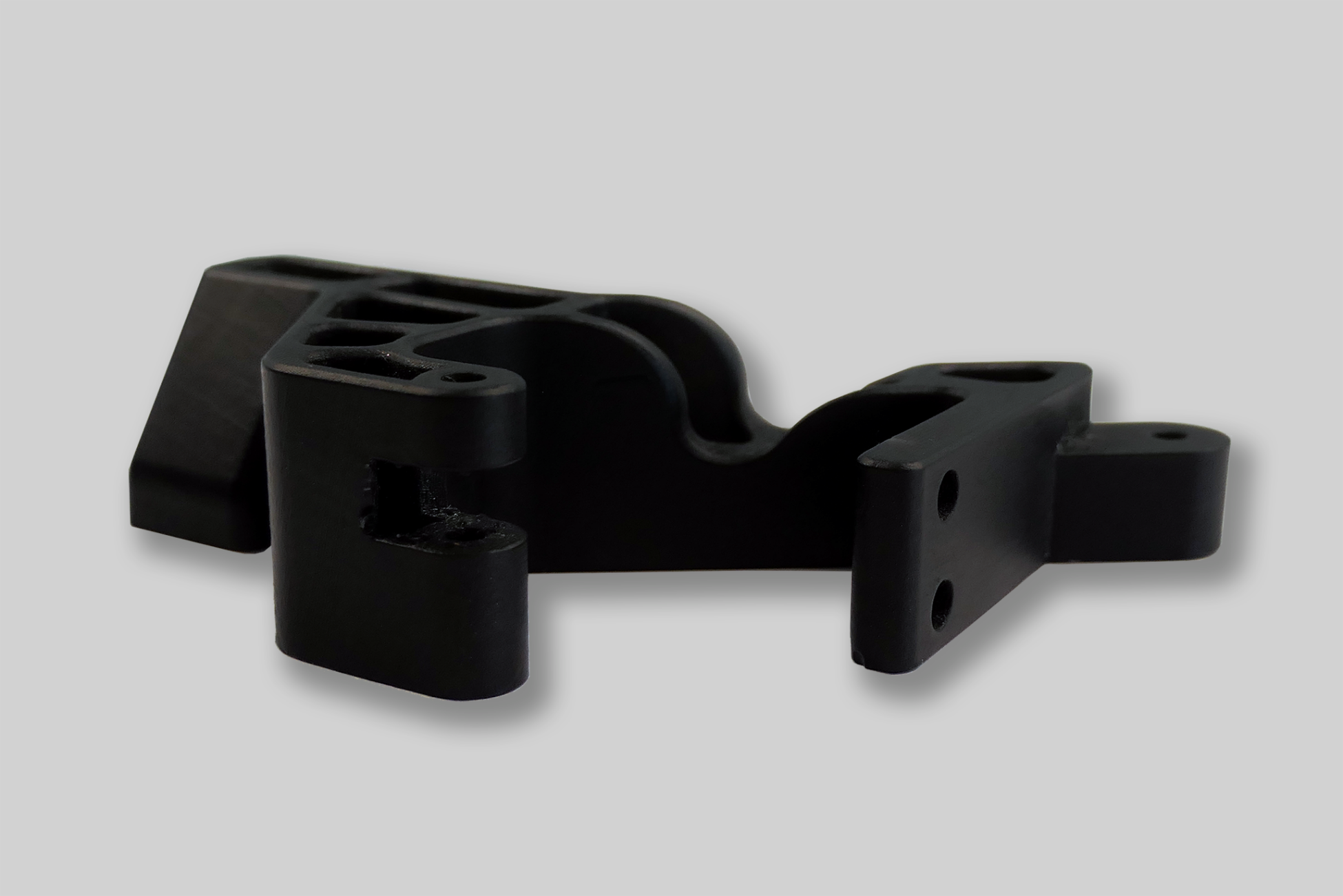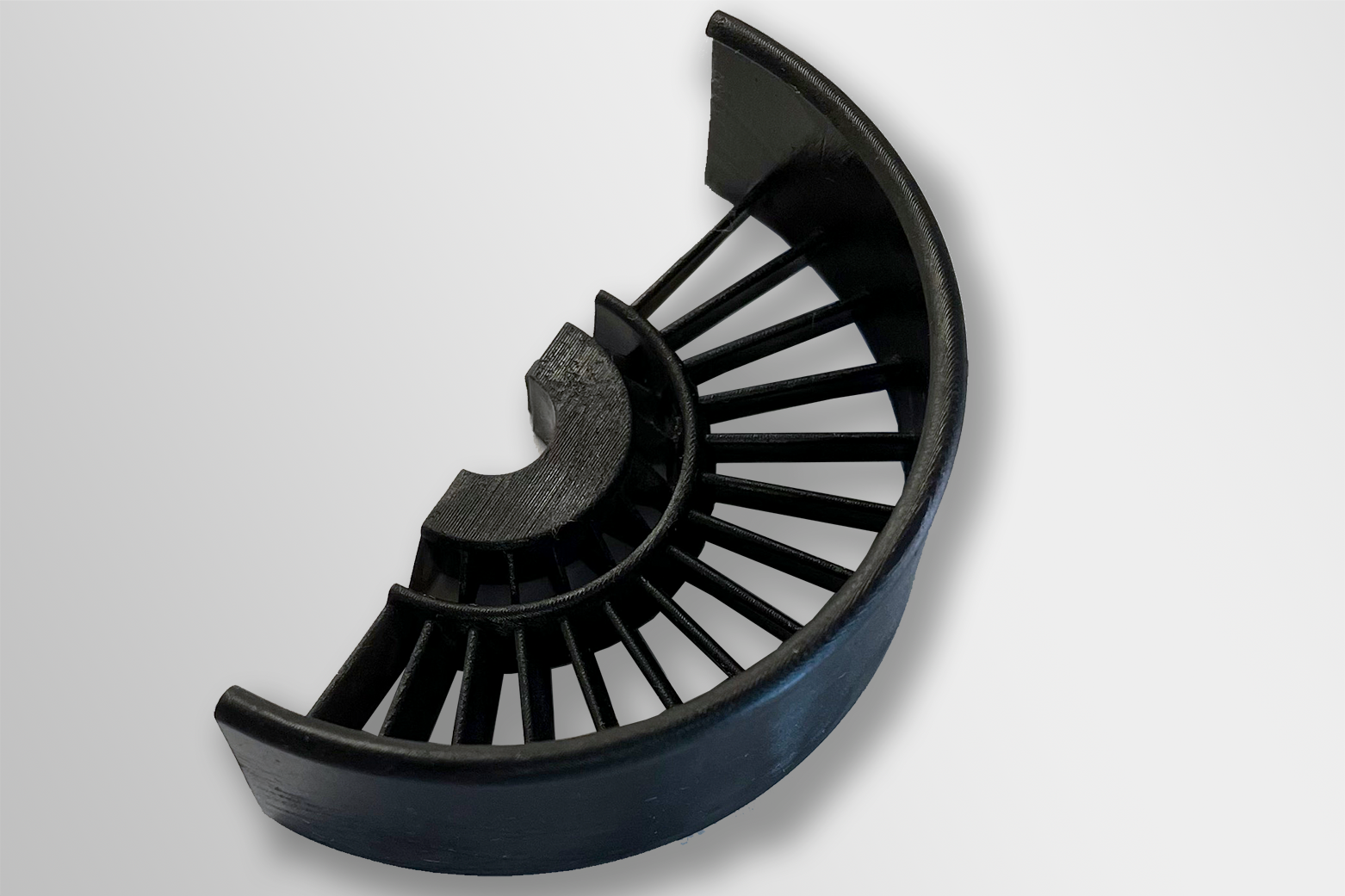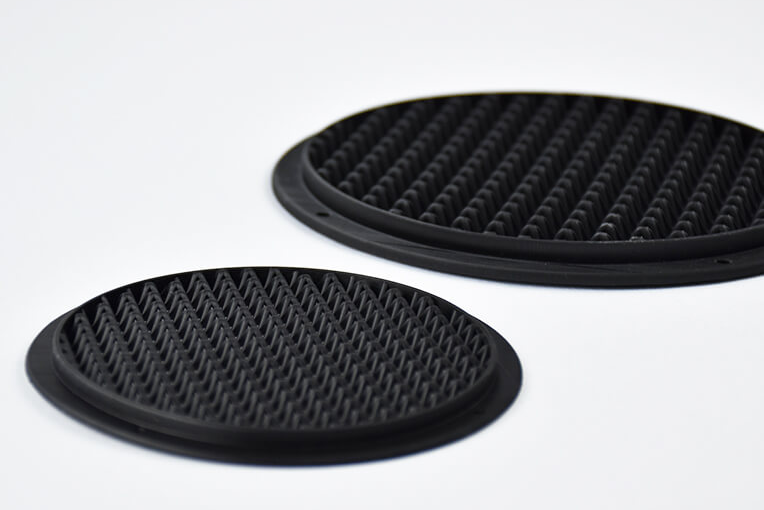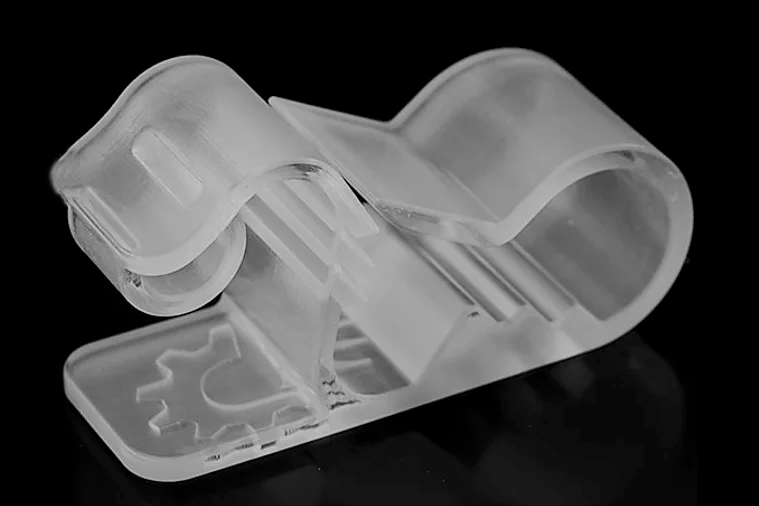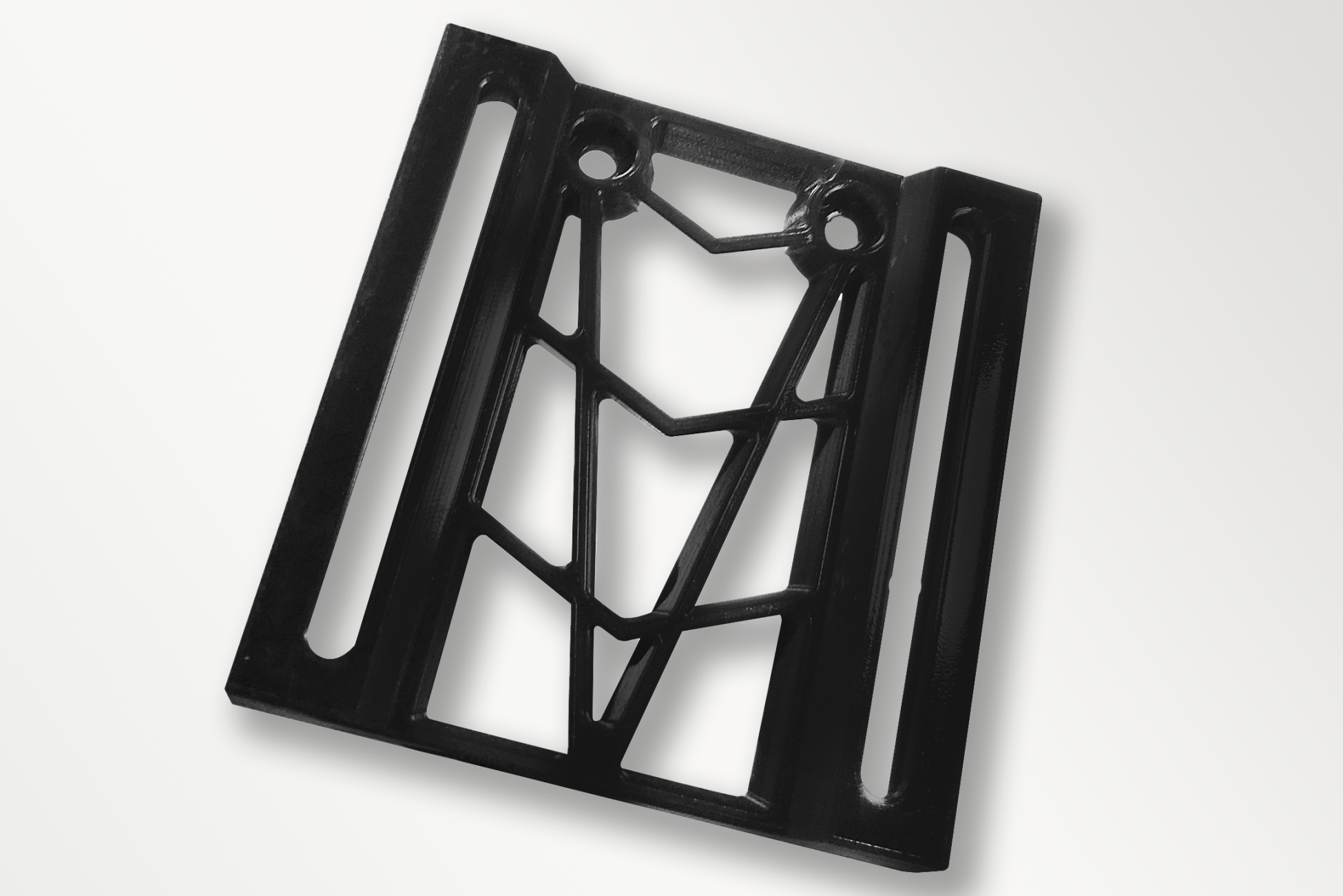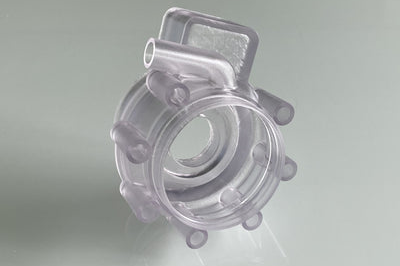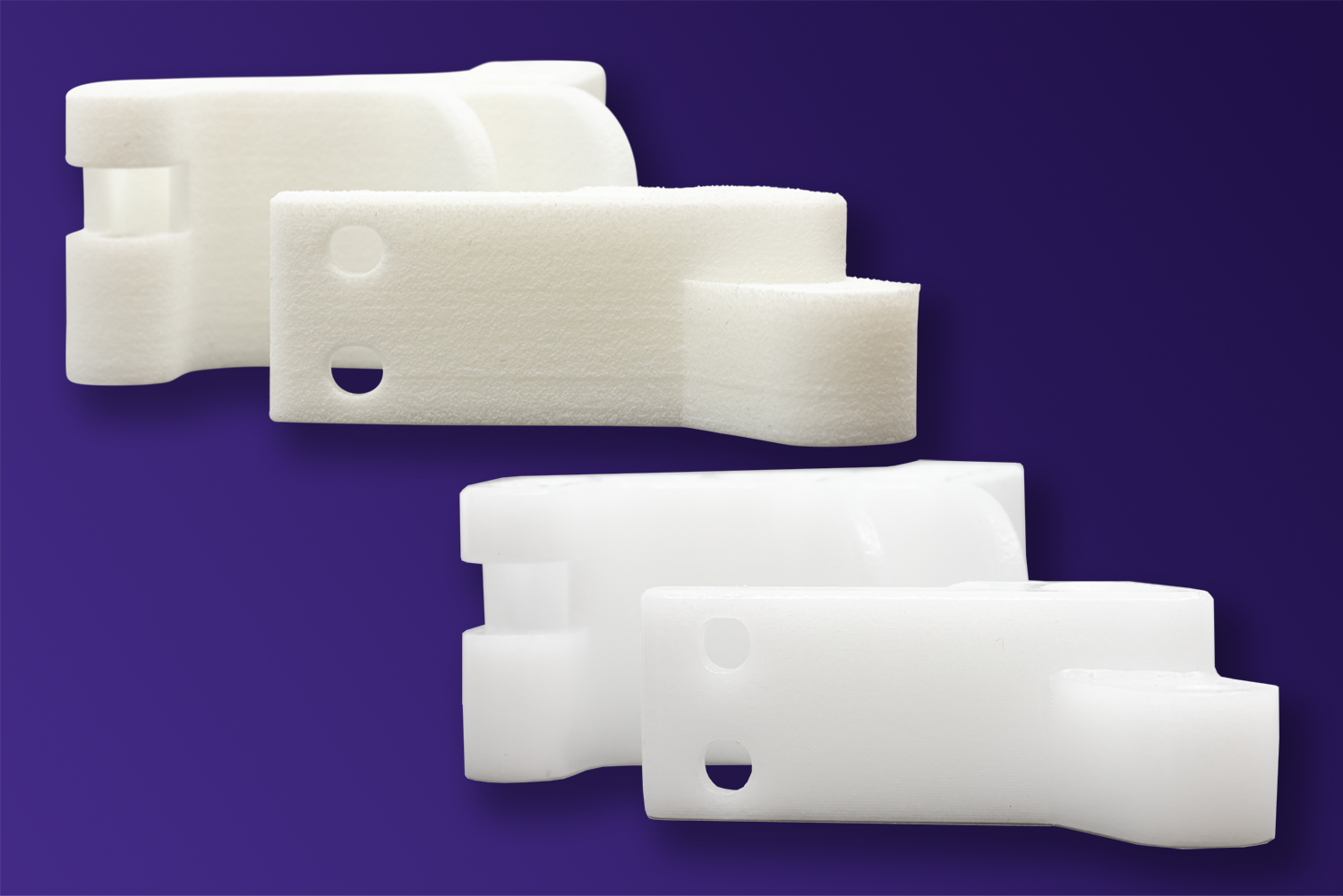What surface finishes are possible in 3D printing today?
In 3D printing, the quality of a surface is directly dependent on the printing process used. While center-line roughness values in the low, single-digit micrometer range are possible with some processes even without reworking, other printing processes require manual or chemical reworking.
Stereolithography and Digital Light Processing
Stereolithography (SLA) and the technically closely related Digital Light Processing (DLP) are two of the oldest, but also most precise, processes in additive manufacturing. SLA printing is best suited for the production of filigree, small prototypes or illustrative models, whereas DLP printing can fully exploit its speed advantages in the 3D printing of series parts. The processes are based on selective curing of liquid polymers, and support structures are always required for printing.
The roughness of the surfaces of workpieces produced using the SLA or DLP processes is directly dependent on the alignment in the printer. The top side of the workpieces is already very smooth without post-processing and offers center roughness values in the low, single-digit µm range. The underside, however, is very uneven and rough due to the support structures. Due to the pore-free starting material, excellent surface values can easily be achieved by manual grinding or - for perfectly homogeneous surfaces - by corundum blasting. Maximum achievable center roughness values of approx. 0.4 µm can be obtained by corundum blasting followed by grinding.
Multi Jet Fusion and selective laser sintering
Multi Jet Fusion (MJF) and Selective Laser Sintering (SLS) are powder-based processes in which a powdered starting material is selectively bonded by chemical or thermal processes. Support structures are not required in these processes (except in the exceptional case of metal printing). Immediately after printing, the surfaces of the workpieces are already of good quality and offer largely homogeneous surfaces. However, due to the nature of the material, tiny pores always appear on the surface of the workpiece, which cannot be completely eliminated even by manual grinding afterwards. Maximum achievable center roughness values for laser sintering are around 1.3 µm and 4.05 µm for HP Multijet Fusion, in each case with reworking by grinding or blasting. Almost completely pore-free surfaces can only be achieved with both processes by means of complex procedures such as vacuum infusion or surface filling with subsequent multiple grinding.
Fused Deposition Modeling
Fused Deposition Modeling (FDM) is one of the processes in which thermoplastics are first liquefied by means of an extruder and then hardened during cooling. Depending on the object to be printed, FDM requires support structures. Surface finish can be described as low to mid-range. The 3D print is virtually pore-free, although stronger grooves are visible in the Z direction due to the process. The underside of the printed components is generally quite smooth, and center roughness values of around 8.8 µm can be achieved on the upper side without reworking. When printing with extruded plastics, surface impairments at the points where support material is applied cannot be avoided. However, it is quite easy to improve the quality of the surface by using sandpaper, glass bead blasting or barrel finishing. Center-line roughness values of 4.5 µm by glass bead blasting down to 2.3 µm by grinding can be realistically achieved with FDM prints.
Surface quality with the Polyjet and Multi Jet Modeling printing processes
In the polyjet or multi-jet modeling printing process, ultra-fine photopolymer droplets are applied to a working platform by a print head, where they melt to form very thin layers. The polymers are immediately cured by UV light. The process always requires the use of support structures. On the other hand, the quality of the surfaces is very good, even without reworking. Due to the low layer thicknesses of max. 30 µm, very homogeneous, pore-free surfaces without perceptible grooves and ridges are produced during printing. At the contact points between the surface and the support structure, quality losses can only be prevented by using thermally soluble or water-soluble support materials. Without post-processing, workpieces printed with Polyjet or Multi Jet Modeling offer center roughness values of approx. 6 µm. Extremely smooth surfaces with center-line roughness values of 0.2 µm can be achieved by grinding, and a convincing 3.7 µm can still be achieved by blasting with corundum.


